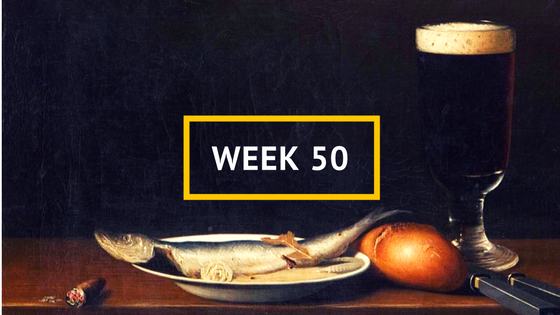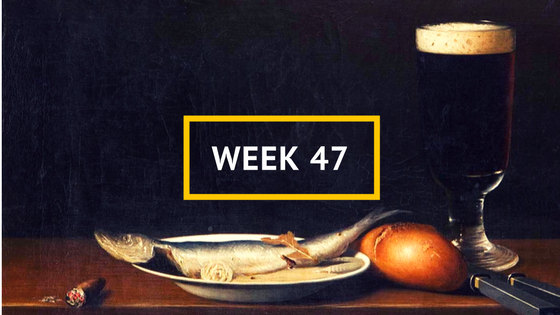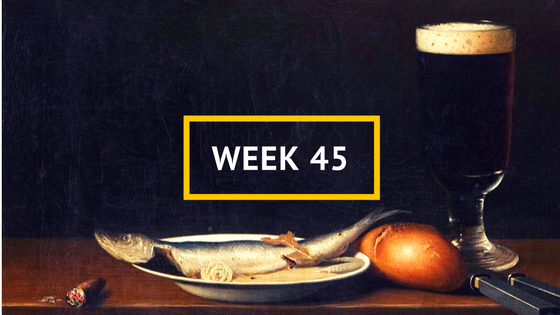|
Another slow week for holiday season. Which, I mean, I'm partially to blame. No time to write! Anyway, this is what caught my eye this week! Lambeth AleA few more added notes on what was once known as 'Lambeth Ale', which appears to be popular around the late 1600's. "Anyway, it is clear that Lambeth ale is something kept in the Royal larder, the only beer or ale mentioned, next to the bread of the elite not to mention the champers. Its high status nature is confirmed by this account of another 1680s gesture at court: In 1687, the French ambassador in London was sending to the marquis de Seignelay regular consignments of English ale, “known as Lambeth ale” and not “strong ale, the taste of which is not much liked in France and which makes men as drunk as wine and costs just as much.” Warwicks & RichardsonsOverview and analysis of some Newark brewing records from 1910. Whisky in OntarioA look through an online database of materials concerning whisky in Canada. "Here, I want to focus on three areas: first, use of whiskey with tansy, as I showed yesterday occurred in Pennsylvania (Jack Daniel used it too in Tennessee); second, taste notes comparing frontier whisky to that of c. 1899; third, a vivid description of an early country tavern." Chinese Wine VesselRecent excavations in China found a tomb containing a few interesting items. One in particular being a wine vessel in the shape of a deer. I don't know what they mean by 'wine', since alcohol derived from rice is beer...They also found some nice cups for 'soup'. Cool find nonetheless!
0 Comments
Slow news week, it seems. But perhaps that should be expected, given the holiday season and all. In any case, here's what caught my eye this week! A Gallon of BeerA look into beer, brewing, and the British Navy. "One thing we know already, is that they aimed at taking along a gallon of beer for each person on board for each day. We know that because, as I first wrote in 2014 and mentioned again in the first issue of MASH magazine, Sir Martin Frobisher provisioned his voyages in 1576-77 to the Canadian High Arctic with that much beer. This was a pretty fabulous expedition, funded by a company if investors made up of aristocrats and even “QE the 1” herself. So they also got to take along two firkins of prunes and other treats." Port Hope WhiskyFollow a series of posts regarding whisky distilled in Port Hope, a small town around Lake Ontario. "An index of this fame was the annual exports of whisky in this period. As Smith’s Gazetteer details, a burg of only 1,200 people sent out 429 casks of whiskey in 1844 (see p. 150). This number is very small today but it was hardly small for the size of the town in question or the number of producing distilleries. In 1844 Port Hope had five distilleries, according to Smith’s." A History of the Hops AssociationThe history of the Oregon Hop Growers Association! Brewing in WallingfordA nice little article highlighting factoids about the history of brewing in Wallingford.
Politics of BeerA featured piece by friend of the blog Brian Alberts in the Washington Post, discussing the association of beer and politics! "Beer, in fact, was central to the founding of our country. Taverns were more common than churches in Colonial society. They were hubs of political and social life where people ate, drank, heard local news, argued about it, held public meetings and conducted business transactions." HeatherAn account of the archaeological evidence of Heather use in brewing. Rum!A series looking into the history of Rum in the Canadian Navy. "Consumption by officers with the men was not traditional but the event was ceremonial, as shown by the consigning of the last dram to the sea. The Commander spoke well and the clip in general is affecting, it speaks to a different time, one we can learn from in more ways than one." KveikNews FeedFor those looking to expand their blog news feed, here's a list from the good folks over at Boak & Bailey! Carillon BrewingThis month's Beer Advocate had a few pieces on brewing history. This one particularly caught my eye, as it is a full on historic brewery!
1600's Derbyshire AleContinuing the research efforts into the ale brewed in Derby, which was apparently quite popular at the time (what with having only around 700 houses, but 120 ale houses and 76 malt houses). "So, it’s pretty clear that well before coke, Derby malt was a thing and a desired thing. Moved by massive pack horse trains, by water as discussed in the first post or by subterfuge as the Pickfords of Macclesfield illustrate. Folks wanted their hands on it." More SetoLars' further exploration of Seto culture and their koduõlu ale, which they sampled at a local restaurant. HeatherA look into the use of Heather in antiquity! "There are certainly more ancient references to heather in Greek and Latin than its adjunct-y friend, meadowsweet. Prior to the first c. BCE, the authors only describe heather as a plant that is worth cutting and lighting on fire. Later, Pliny likens heather to myrica – the name for the family of plants that includes another famous gruit herb, bog myrtle." World of BrewingHints at a Brewing Museum in England around the 1980s. Dunno if it's heartwarming to know that promotion and the study of brewing history was occurring back in the 80s, or daunting because it closed down... Beer SparklersA brief examination of the cask ale sparkler, a little device used to add foam to ales. "The sparkler was referred to parenthetically in a 1949 brewing journal article by J.W. Scott, “From Cask to Consumer”. Initially I thought it was a post-1945 invention, or perhaps an expedient to make thin, wartime beer more attractive in the glass." Beer in AdvertsExamining old newspapers shows the range of beers produced by three different breweries in the early 1900s. "I was surprised to see that the two Faversham breweries produced both Table Ale and Table Beer. Table anything was pretty rare in England by this point. It had long been dropped by the big London brewers. The examples here must have been pretty low gravity as they're under 30s per barrel. At that price, they's have to be under 1040º." Georgian WineAs was hinted at last week, Dr. McGovern and crew provide evidence for wine making in Georgia from 8,000 years ago.
|
Jordan RexBeer archaeologist Archives
December 2017
Categories |







 RSS Feed
RSS Feed
